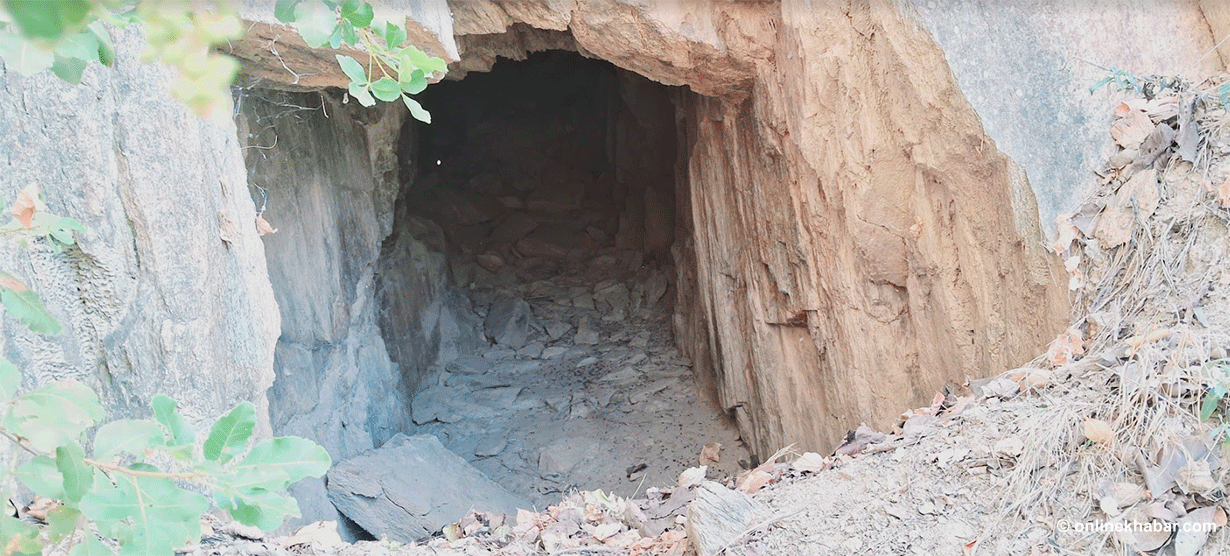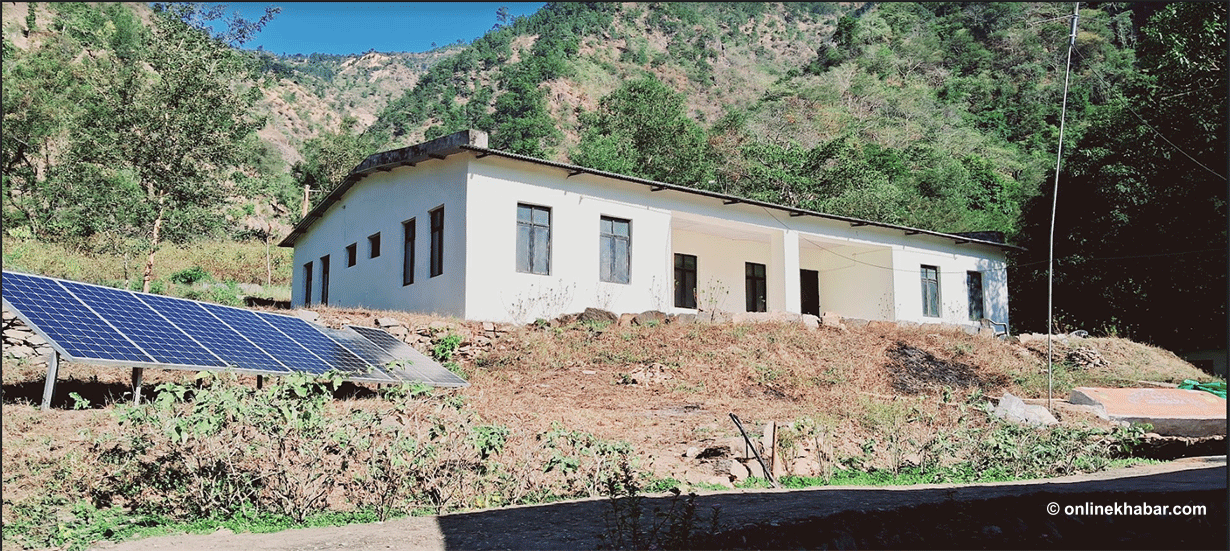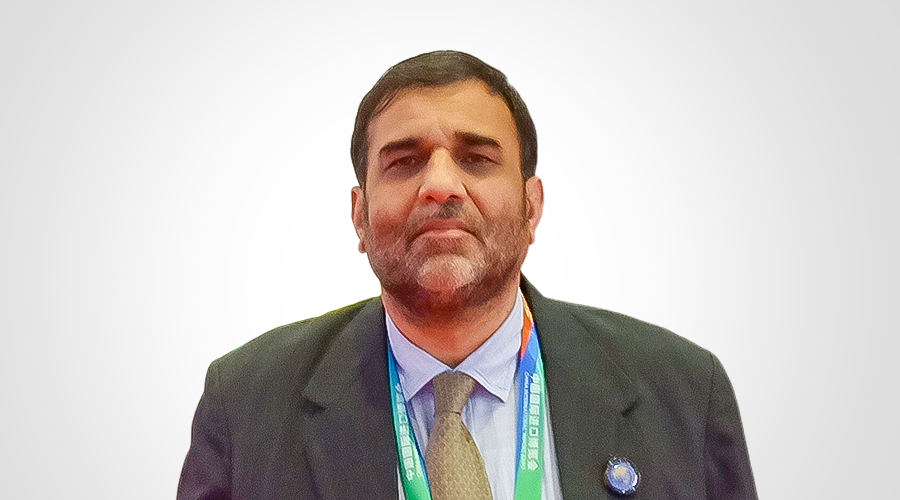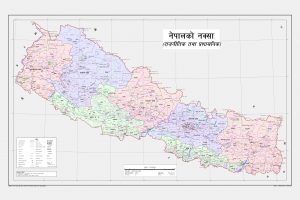
It has been 55 years since Maharsingh Dhami, 78, of Dhamkudi in Pancheshwar Rural Municipality-1 of Baitadi started living in a hut on the banks of the Mahakali river. Since he was 26, Dhame made a small living on the banks of the Mahakali as he took Nepalis across the river and dropped them off in India.
Over half a decade ago, Dhami charged people Rs 0.40 per person and an additional Rs 0.50 for their loads during the low tides month (October to May). The price went up significantly during the high tide months (June to October) as he charged people Rs 1.50 and Rs 2 for their loads. The rate for boat rides was approved by the then Dadeldhura district panchayat (a pseudo-governing body with a group of locally elected members) that oversaw many districts including Baitadi.
Dhami also used to work as a fisherman with Lok Bahadur Chand of Kulau in Baitadi. But following Chand’s demise 15 years ago, Dhami could not bring himself to go back to the Mahakali river.
He continues to live on the banks of the river he does not row his boat anymore. Now in his twilight years, he has given the boat to someone else. Over time, Dhami has witnessed numerous changes around the area. The boat ride which cost as little as Rs 0.40, has now risen to Rs 50.
What remains unchanged is the fact that the Pancheshwar hydropower project, which was intended to transform the lives of the locals, has not been constructed even after five decades.

Dhami currently operates a small grocery store near the banks of the Mahakali river. Close to where he lives is the construction site of the Pancheshwar hydropower project.
Dhami recalls his parents and grandparents telling him how the Pancheshwar hydropower project would change their lives.
“An entire generation has died yet the project has not started,” says Dhami.
Udham Singh Saud, 52, who took over Dhami’s boat also heard the same from his father who told him their lives would change after this project was complete. However, now in his 50s, he has given up on that dream and is certain this project will not be complete during his lifetime.
“When we were kids, we were told that India had surveyed the area to build a hydropower project here. It has been four generations now and little work has been done. Four generations have come and gone and this project has been in limbo. We don’t believe anything will happen now,” says Saud.
What is the Pancheshwar project?
On February 12, 1996, Nepal signed the historic Mahakali Treaty with India. This agreement, signed between the then Prime Minister Sher Bahadur Deuba and his then-Indian counterpart PV Narasimha Rao, focused on hydropower generation and water management, including projects like the Sarada Barrage, Tanakpur Barrage, and the Pancheshwar Project along the Mahakali river.
The dam site for the Pancheshwar Multipurpose Project was identified by the Indian side in 1956. Initially, the project report in 1971 indicated the project would produce 1,000 MW of electricity. However, in 1991, when the dam’s design specified a height of 315 meters, it was established that the total output would be 6,480 MW. In 1995, Nepal prepared a detailed project report for its part in this project.
The project aimed to generate a total of 6,650 MW of electricity from Pancheshwar and an additional 250 MW from Rupaligad, with the goal of providing irrigation facilities in Kanchanpur and certain parts of India extending towards Nepal.
Since its inception, the Pancheshwar project has been a recurring topic of discussion during every visit by the Prime Minister of Nepal to India. Things did move ahead this year with Nepal agreeing to sell around 10,000 MW of electricity to India in the near future.
That prompted Foreign Minister NP Saud to say that the Pancheshwar project had reached a breakthrough, with the DPR in its final stage.
“Several agreements have been finalised, encompassing the sale of 10,000 MW of electricity to India and the initiation of the Pancheshwar project,” he said.
However, according to Madhu Prasad Bhetuwal, Chief Executive Officer (CEO) of the Pancheshwar Development Authority, despite discussions at various stages between the two countries, no concrete agreement has been reached among the experts concerning the Pancheshwar Multipurpose Project.
Why the delay?
Many years have passed since India set up a temporary office for the Pancheshwar Project along the Mahakali river, with Nepal establishing its office across the river. Nepal’s government established its office on the Indian side in 1987 and four employees have been placed to work there for the last 36 years.

Even though the office has been set up, work remains stagnant due to the absence of an agreement between the two countries. Following the Mahakali Treaty, the Pancheshwar project was jointly inspected by Nepal and India, and it was subsequently placed under the Department of Electricity Development in 1993.
The Mahakali Treaty originally stipulated that the detailed project report (DPR) for the Pancheshwar project would be prepared within six months, and construction would be completed within eight years.
Despite the completion of the DPR for Pancheshwar over three decades since the treaty, the actual implementation of the project remains elusive. Experts have suggested that India’s reluctance to move forward with the Pancheshwar project is attributed to concerns about using the water from the Mahakali river. Additionally, the lack of clarity regarding the quantity of water consumed by India under the Mahakali Treaty has contributed to confusion and further hindered progress.
Project and its impacts
To the east of the Pancheshwor dam site is Salla village and to the south is Santula village of Pancheshwar rural municipality-1 (Nepal) whereas, to the west is Nidil village of Champawat district and to the north is Sel village of Pithoragarh district (India).
According to a study conducted in Nepal in 2012, the proposed 311-meter dam for the Pancheshwar project would have an impact on 17 villages, stretching from Pancheshwar village to areas as far as Baitadi and Darchula. The study estimated that over 20,000 people would be displaced across 21 villages.
Meanwhile, another study conducted by India in 2016 for the Pancheshwar Project’s Pancheshwar Dam indicated that a total of 49,666 people in 134 villages on the Indian side would be affected, along with an additional 4,822 people in the Rupali Gad area.
However, there is no updated data on the affected population due to the absence of recent studies on both sides. The proposed height of the uppermost dam in the Pancheshwar project is 691 meters. It is reported that this project will cover an area of approximately 34.5 sq km on the Nepal side and 65.5 sq km on the Indian side.
Despite the anticipation of employment opportunities for the residents of the affected areas after the project’s construction, the issue of their management remains unresolved.
Diwan Sarki, the ward chair of Pancheshwar Rural Municipality-1, said that the Pancheshwar project has faced obstacles due to the failure to reach an agreement between Nepal and India.
Bina Bhatt, the vice chairperson of the rural municipality, who has been aware of the Pancheshwar project from a young age, says that she has witnessed everyone’s disappointment due to the lack of progress in the project.
“The people here are already living with the expectation that they will secure jobs after its completion and that their current way of life will change. However, due to various reasons, there has been a recent surge of disappointment among the people. They claim that the project will be completed, but nothing has happened yet.”
Bhatt believes that if the Pancheshwar project is built, many people will be displaced in both Nepal and India.
“Yes, it may have been stopped for many years due to various treaties and agreements, but this project will transform the lives of both countries and its citizens, if there is economic growth, why not build it, the work should be started soon,” said Bhatt.
They are compelled to recall the bitter reality that, for years, leaders representing local to national politics with the agenda of initiating the Pancheshwar project have been soliciting votes from the populace.
“Including Sher Bahadur Deuba, Lokendra Bahadur Chand, who has risen to the position of Prime Minister from the Far West, and subsequent leaders who have held ministerial positions multiple times, have consistently made the Pancheshwar project an electoral agenda every year,” says Bhana Saud (79) of Pancheshwar rural municipality-1.
“But now, we are unsure about the type of leader we need to elect to see Pancheshwar come to fruition,” she adds.





















